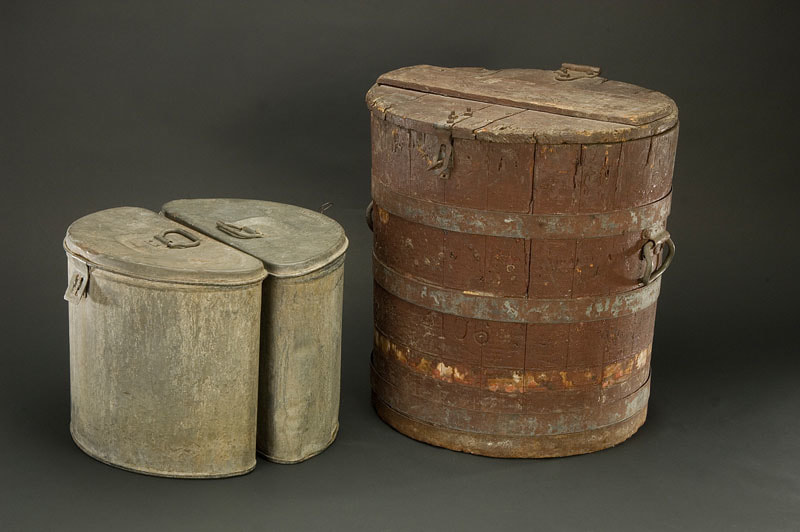
In my research on the second book of my series on the Civil War in New Mexico I've been reading a lot of journals and diaries left behind by men in the Colorado Volunteers. Many of them mention acquiring tins of oysters. It's made me wonder why men so far from the ocean seemed inordinately fond of a food that seems unlikely. Recently a dear friend of mine published a little booklet on oyster stew, which he called a New Mexico Christmas Eve tradition. That got me thinking about oysters, about Christmas, and about how they might have become connected.
Canning and oysters both boomed at the same time in American history. The one helped the other become accessible, cheap, and popular.
Canning was invented at the behest of Napoleon Bonaparte, who famously said that an army travels on its stomach. The first metal cans were made of tin-lined cast iron and were almost impregnable. Most people used a chisel and hammer to open them.
By the 1840s tin smiths were fashioning cans out of thinner, more easily breached tin. The invention of the can opener by Ezra Warner followed in 1858. Warner's can openers were standard issue to cooks during the Civil War.
Canning and oysters both boomed at the same time in American history. The one helped the other become accessible, cheap, and popular.
Canning was invented at the behest of Napoleon Bonaparte, who famously said that an army travels on its stomach. The first metal cans were made of tin-lined cast iron and were almost impregnable. Most people used a chisel and hammer to open them.
By the 1840s tin smiths were fashioning cans out of thinner, more easily breached tin. The invention of the can opener by Ezra Warner followed in 1858. Warner's can openers were standard issue to cooks during the Civil War.

Another early can opener, called the Bully Beef Opener, was common in England. This opener was decorated with a bull's head. It has been said that what Americans call Corned Beef, British call Bully Beef because the cans it was stored in were opened with a Bully Beef Opener. This may be apocryphal, though; other sources suggest that the British word for this product is an anglicized version of the French boeuf bouilli, or boiled beef.

rail and steamboat across the entire country and into the territories. Companies such as Platt & Co, founded in 1848, sent ice-packed tins of oysters to men who'd gone west to California and Colorado in search of gold. These men, faced with hardships and shortages of essentials, so nostalgically yearned for the east coast foods of their childhoods that they were willing to pay outrageous amounts for a little taste of home.
I grew up eating oyster stew on Christmas Eve. My maiden name is Swedberg, a Swedish name, but I'd thought my own family's tradition of oyster stew on Christmas eve came from my Norwegian grandfather. My research, however, didn't credit Scandinavians, but
I grew up eating oyster stew on Christmas Eve. My maiden name is Swedberg, a Swedish name, but I'd thought my own family's tradition of oyster stew on Christmas eve came from my Norwegian grandfather. My research, however, didn't credit Scandinavians, but

Irish immigrants with making oyster stew a traditional Christmas Eve dish. Thousands of Irish entered the United States in search of better lives during the years of the Potato Famine, 1845-1852. Most of the Irish immigrants were Catholic and fasted from eating red meat on Christmas Eve. Instead, they ate a simple stew made from ling, a type of fish not available in America.
The Ling, which had been dried and heavily salted to preserve it, was cooked in a rich broth of milk, butter, and pepper, yet remained chewy from being dried. Once they were in America, Irish cooks substituted oysters for ling because the cheap and easily obtainable oysters tasted briny and had a similar, chewy texture.
The Ling, which had been dried and heavily salted to preserve it, was cooked in a rich broth of milk, butter, and pepper, yet remained chewy from being dried. Once they were in America, Irish cooks substituted oysters for ling because the cheap and easily obtainable oysters tasted briny and had a similar, chewy texture.

I've got some Irish in me. Are they the ancestors who began my family tradition? I don't know any other New Mexicans who eat oyster stew on Christmas eve, and wonder if my friend Kirk's family eats it because his parents and my parents were friends and the Austins learned to eat it from the Swedbergs. The origins of traditions can be hard to pin down.
If this is the year you are inspired to go back in history and try this traditional dish you might want to try the recipe my friend Kirk Austin has published on Amazon.
Is oyster stew among your family's Christmas traditions? I'd love to know if it is, and where you think your family picked up its traditions.
If you'd like a short story featuring characters from my Civil War Trilogy and oyster stew, click here.
If this is the year you are inspired to go back in history and try this traditional dish you might want to try the recipe my friend Kirk Austin has published on Amazon.
Is oyster stew among your family's Christmas traditions? I'd love to know if it is, and where you think your family picked up its traditions.
If you'd like a short story featuring characters from my Civil War Trilogy and oyster stew, click here.






No comments:
Post a Comment